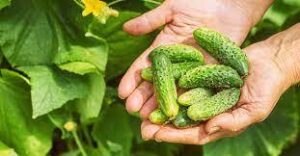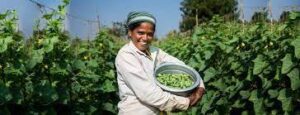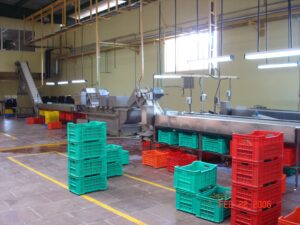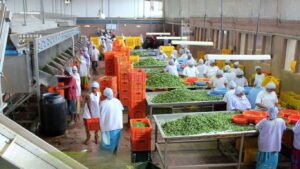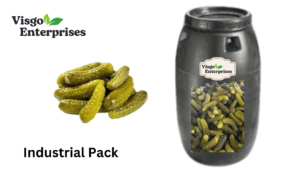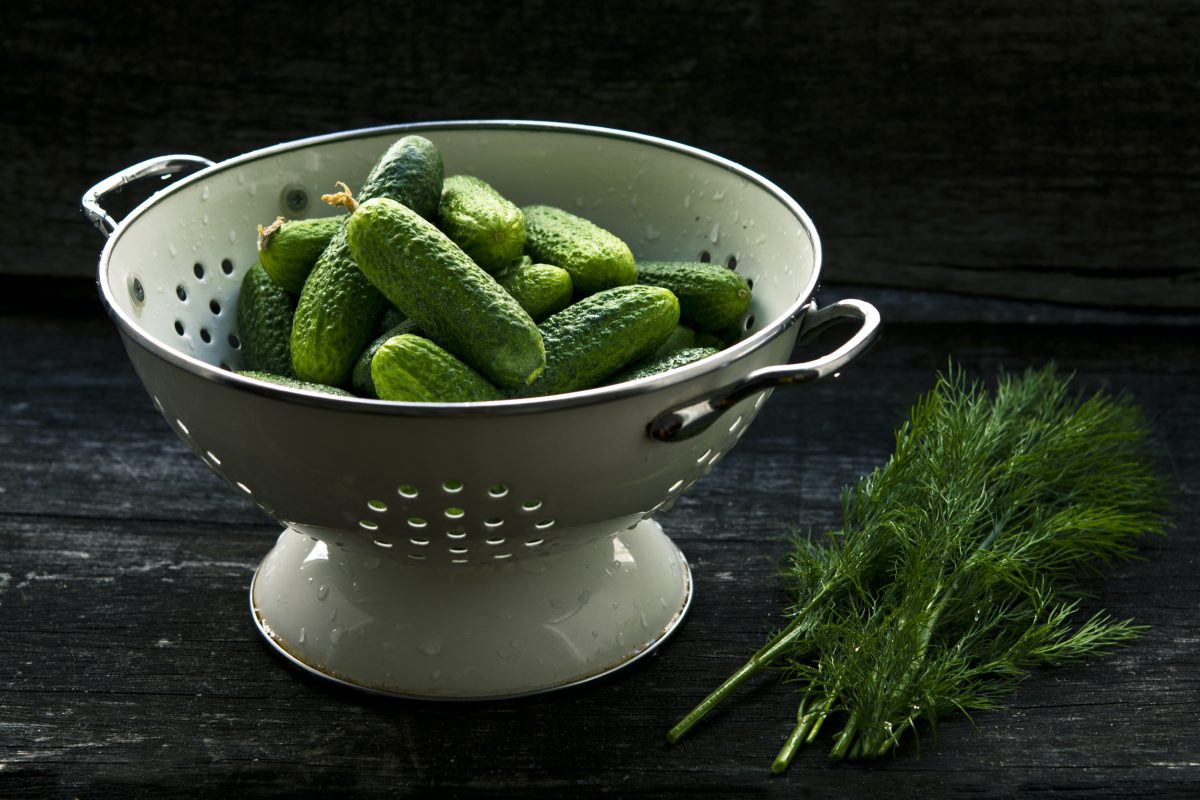Leading Exporter of Indian Pickled Gherkin: Check Pickled Gherkin India Export Latest Price Trend
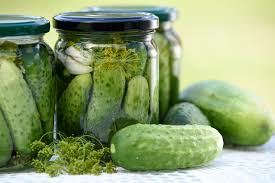
India is a leading exporter of pickled gherkin, also known as baby cucumber. The export industry is rapidly growing, with increasing demand from countries all over the world.
The leading exporter of Indian pickled gherkin has established itself as an expert in the field, with a commitment to quality assurance and safety measures. Their products are consistently high-quality and meet the demands of international markets.
In this section, we will explore the latest price trends in the Indian pickled gherkin export market. With a deep dive into the market analysis, readers will gain a better understanding of the factors influencing market rates and the current state of the industry.
Key Takeaways
India is a leading exporter of pickled gherkin, also known as baby cucumber or qukes.
The leading exporter of Indian pickled gherkin is committed to quality assurance and safety measures.
The market for Indian pickled gherkin is rapidly growing with increasing demand from countries all over the world.
Readers will gain insights into the latest price trends in the Indian pickled gherkin export market.
Market analysis will provide a better understanding of the factors influencing market rates and the current state of the industry.
About Indian Pickled Gherkin
Indian pickled gherkin is a popular vegetable that has gained worldwide recognition for its unique taste and texture. It is widely used in Indian cuisine, and its popularity has spread to other parts of the world as well. This vegetable is often confused with pickled onions, but they are two distinct vegetables with different characteristics.
Pickled onions are often used as a garnish or condiment, while Indian pickled gherkin is a vegetable that can be used in various dishes. Indian pickled gherkin has a crunchy texture, and it is often marinated with a blend of spices, giving it a unique and delicious taste.
Ensuring Freshness: Storage and Shelf Life
Proper storage is essential to maintain the freshness and flavor of Indian pickled gherkin. Follow these tips to keep your pickled gherkin crunchy and tasty:
Store in an airtight glass jar to prevent moisture and air from entering.
Keep the jar in a cool, dark place away from direct sunlight.
Refrigerate after opening to extend the shelf life.
For those interested in growing their own mini cucumbers, mini cucumber seeds are readily available online and in nurseries. Here are some tips on growing mini cucumbers in pots:
Choose a pot that is at least 12 inches deep and wide.
Fill the pot with well-draining soil mixed with compost.
Plant the seeds 1 inch deep and 4 inches apart.
Water the soil regularly and keep it moist but not waterlogged.
Place the pot in a sunny location and provide support for the vines to climb.
By following these simple tips, you can enjoy the delicious taste of Indian pickled gherkin and even grow your own mini cucumbers at home!
Nutritional Value of Indian Pickled Gherkin
Indian pickled gherkins are a flavorful and nutritious addition to any meal. These small cucumbers pack a punch of flavor and come with a host of health benefits. Let’s take a closer look at the nutritional value of Indian pickled gherkins.
Nutrient Amount per 100g
Calories 13
Protein 0.7g
Carbohydrates 2.4g
Fiber 1.2g
Fat 0.2g
Vitamin C 10%
Vitamin K 16%
As we can see from the table, Indian pickled gherkins are a low-calorie snack that is rich in nutrients. They are an excellent source of vitamin C, providing 10% of the daily recommended value per 100g. Vitamin C is a powerful antioxidant that helps protect cells from damage caused by free radicals. Indian pickled gherkins are also a good source of vitamin K, which is important for bone health and blood clotting.
Furthermore, Indian pickled gherkins are high in fiber, making them an excellent snack for promoting digestive health and regulating blood sugar levels. At just 13 calories per 100g, they are an ideal snack for those looking to maintain a healthy weight.
Overall, Indian pickled gherkins are a healthy and nutritious addition to any meal or snack. With their low calorie content and high nutrient density, they are an excellent choice for those looking to improve their overall health and well-being.
Market Analysis: India’s Export Price Trend
Understanding the export price trend for Indian pickled gherkin is crucial for both exporters and buyers. The price trend is influenced by various factors, including demand, supply, production, and raw material costs.
Over the past few years, India’s export price trend for pickled gherkin has been relatively stable. In 2021, the export price of Indian pickled gherkin stood at $800-1200 per tonne. This price range has remained consistent over the past few years, with slight variations depending on the season and market conditions.
“The export price trend for Indian pickled gherkin has remained stable over the past few years, with slight seasonal variations.”
While the price trend has been stable, it is worth noting that there has been a steady increase in demand for Indian pickled gherkin in international markets. This demand has been attributed to the unique flavor and quality of Indian pickled gherkin, which is highly sought after by consumers.
In addition, the rising popularity of Indian cuisine in several countries has also contributed to the increased demand for Indian pickled gherkin. The increase in demand has helped stabilize the export price trend, as sellers have been able to maintain a consistent price range due to high demand.
If you’re an exporter or buyer, it’s essential to keep an eye on the export price trend for Indian pickled gherkin to make informed business decisions. Understanding the market conditions and identifying opportunities for growth can help businesses stay ahead in this competitive industry.
Growing Areas of Indian Pickled Gherkin
India is well known for its diverse and abundant agriculture, providing it with a strong foundation for exports. The cultivation of pickled gherkins is no exception, with certain regions having ideal conditions for their growth.
The pickled gherkin season in India typically runs from January to August, with peak production occurring from April to June. During this time, there are several regions where the cultivation of pickled gherkins is concentrated, including:
State Top Producing Districts
Karnataka Dharwad, Belagavi, Haveri
Telangana Khammam, Nalgonda, Ranga Reddy
Andhra Pradesh Guntur, Prakasam, Nellore
Tamil Nadu Coimbatore, Nilgiris, Theni
These regions have favorable climates and conditions that contribute to the cultivation of high-quality pickled gherkins. The weather patterns, soil quality, and availability of resources such as water all play a crucial role in the growth of pickled gherkins.
In recent years, there has been an increasing demand for mini cucumbers, which are commonly used for pickling. This has led to an expansion of pickled gherkin cultivation in other regions of India as well.
For those interested in growing their own pickled gherkins, mini cucumber plants are a popular option. They can be grown in pots and require little maintenance. Mini cucumber seeds are readily available for purchase, and growing them at home can provide a fresh and convenient source for pickling.
Exploring the Export Process
When it comes to exporting Indian pickled gherkin, it’s crucial to work with an experienced and reliable exporter who can ensure timely delivery and top-quality products.
The leading exporter of Indian pickled gherkin has an in-depth understanding of the export process and can handle all aspects, from packaging and documentation to customs clearance and shipping.
As an Indian pickled gherkin exporter, they have established relationships with reliable transporters and can guarantee on-time delivery to various locations across the globe.
Moreover, they strictly adhere to quality control measures to ensure the products meet all export requirements and safety standards. Their commitment to quality and safety has earned them a reputation as a trusted and credible baby cucumber exporter.
Indian Pickled Gherkin Export Process
The Indian pickled gherkin export process involves several steps to ensure the safe and timely delivery of the product. Here is a brief overview of the export process:
- Quality Check The exporter conducts a thorough quality check to ensure the pickled gherkins meet all safety and quality standards.
Packaging The pickled gherkins are carefully packed into suitable containers, including jars, drums, or cans, depending on the client’s requirements.
2. Documentation All necessary documentation, including health certificates and customs documents, is prepared in accordance with the relevant regulations.
Transportation The pickled gherkins are transported to the port of shipment, where they are loaded onto the vessel for export to the destination country.
3. Customs Clearance Upon arrival in the destination country, the products undergo customs clearance before being released for delivery to the client.
By following these steps, the leading exporter of Indian pickled gherkin can ensure a seamless and hassle-free export experience for their clients.
Latest Export Price Trends
Export price trend is a vital aspect of Indian pickled gherkin exports. The Indian gherkin export market has seen a fluctuating trend over the years. According to recent market reports, the export price of Indian pickled gherkin has surged due to the COVID-19 pandemic. The rise in demand for pickled vegetables and preserved food products has led to an increase in prices.
Currently, gherkin export from India is mainly to Europe, followed by the USA and Japan. The Indian gherkin price trend has remained on a high note due to the COVID-19 situation. It is said that India is expected to continue its dominance in the global gherkin market as the country has a considerable share of global production.
The baby cucumber export price has also been impacted by the ongoing pandemic. The export price of Indian pickled gherkin has seen an increase of around 25% due to the shortage of raw materials and logistic issues. The export price of Indian pickled gherkin is estimated to remain stable in the coming months.
The table below provides an overview of the export price trend of Indian pickled gherkin:
Year Export Price of Indian Pickled Gherkin (USD/KG)
2018 1.35
2019 1.25
2020 1.65
2021 (June) 1.85
As shown in the table, the export price of Indian pickled gherkin has seen a gradual increase over the years. Also, the export price of Indian pickled gherkin has witnessed an upward trend in 2020 and 2021 due to the COVID-19 pandemic.
Overall, the export price trend of Indian pickled gherkin is expected to remain stable in the near future. As the world continues to navigate through the pandemic, the demand for preserved food products and pickled vegetables is likely to increase, leading to stronger export prices for Indian pickled gherkin.
Future Prospects and Market Outlook
With Indian pickled gherkin exports on the rise, there is a promising future for Indian pickle exporters. The Indian gherkin price trend is expected to remain stable despite global market fluctuations, making it a reliable and lucrative investment for both exporters and consumers.
As the demand for pickled gherkins continues to grow, Indian exporters are expected to expand their reach and tap into new international markets. With their expertise in the industry and commitment to quality assurance, Indian pickled gherkin exporters are well-positioned to become key players in the global market.
“India is expected to remain the leading exporter of pickled gherkins, with the Indian pickle exporter industry projected to reach unprecedented heights in the coming years.”
With the increased consumer interest in healthy and exotic foods, the demand for Indian pickled gherkins is expected to continue to rise. This presents an exciting opportunity for Indian exporters to expand their product offerings and cater to a broader audience.
Challenges and Opportunities Ahead
While the market outlook for Indian pickled gherkin exports is largely positive, there are challenges that must be addressed. One of the biggest challenges faced by Indian pickle exporters is the increasing competition from other global players.
However, this also presents an opportunity for Indian exporters to differentiate themselves by offering unique and high-quality products. By investing in research and development and implementing cutting-edge technology, Indian exporters can stay ahead of the curve and remain competitive in the global market.
Overall, the future prospects for Indian pickled gherkin exports are bright, with ample opportunities for growth and expansion. With their commitment to quality and innovation, Indian pickle exporters are poised for success in the years to come.
Conclusion
In conclusion, Indian pickled gherkin exports have gained significant momentum over the years, with the leading exporter of Indian pickled gherkin setting a benchmark for quality and expertise in the industry. By exploring the various aspects of Indian pickled gherkin, including its nutritional value, culinary uses, and export price trend, we have provided valuable insights for exporters and consumers alike.
It is important to note the safety measures and quality assurance practices implemented by the Indian pickled gherkin exporter, especially in light of previous incidents such as the baby cucumbers salmonella breakout. However, with the right storage and handling practices, Indian pickled gherkin can maintain maximum freshness and extend shelf life, making it a versatile and valuable addition to any pantry.
As the market for Indian pickled gherkin continues to expand, it is crucial for exporters to stay updated on the latest price trends and consumer preferences. By understanding the export process and market analysis, exporters can make informed decisions in this competitive market and capitalize on the growth potential of the industry.
FAQ
What is Indian pickled gherkin?
Indian pickled gherkin is a type of cucumber that has been pickled in a brine solution, typically with vinegar, salt, and various spices. It is a popular condiment and snack in Indian cuisine.
How is Indian pickled gherkin used?
Indian pickled gherkin can be enjoyed on its own as a tangy and flavorful snack. It is also frequently used as an accompaniment to main dishes, such as curries and rice dishes. Additionally, it can be added to salads, sandwiches, and wraps for added crunch and flavor.
What quality assurance and safety measures are in place for Indian pickled gherkin?
The leading exporter of Indian pickled gherkin takes quality assurance and safety very seriously. They have stringent quality control processes in place to ensure that the pickled gherkins meet the highest standards. They also adhere to strict food safety regulations and regularly conduct internal and external audits to maintain the safety and quality of their products.
Was there a salmonella breakout related to qukes baby cucumbers?
Yes, there was a salmonella breakout linked to qukes baby cucumbers in the past. As a result, there was a recall of the affected product to ensure the safety of consumers. The leading exporter of Indian pickled gherkin implements strict safety measures to prevent such incidents and ensure the highest level of quality and safety in their products.
How should Indian pickled gherkin be stored to ensure freshness?
To ensure maximum freshness, Indian pickled gherkin should be stored in a clean, airtight container in the refrigerator. The brine solution helps preserve the pickles, and keeping them chilled will help maintain their texture and flavor. It’s important to ensure that the pickles are fully submerged in the brine to prevent them from drying out. Proper storage will extend the shelf life of the pickles.
What is the nutritional value of Indian pickled gherkin?
Indian pickled gherkin is a low-calorie and nutritious food. It is rich in vitamins and minerals, including vitamin K, vitamin C, potassium, and magnesium. However, the nutritional content may vary depending on the specific ingredients and preparation methods used in pickling. It’s always a good idea to check the product label or consult the manufacturer for detailed nutritional information.
What is the export price trend of Indian pickled gherkin?
The export price trend of Indian pickled gherkin can vary based on market conditions, supply and demand, and other factors. It is advisable to refer to reputable sources, industry reports, or consult with the leading exporter of Indian pickled gherkin for the most accurate and up-to-date information on the export price trend.
Which areas in India are known for growing pickled gherkins?
The key growing areas for Indian pickled gherkin include states such as Karnataka, Andhra Pradesh, Tamil Nadu, and Maharashtra. These regions have favorable climatic conditions and suitable soil for the successful cultivation of pickled gherkins. The specific pickled gherkin season in India may vary slightly depending on the state and growing conditions.
What is the export process for Indian pickled gherkin?
The export process for Indian pickled gherkin involves several steps. The leading exporter of Indian pickled gherkin handles the processing, packaging, and logistics of exporting the product. This includes sourcing high-quality pickled gherkins, ensuring compliance with export regulations, and arranging transportation to the desired export destination. They work closely with international buyers and follow established protocols to meet customer requirements and ensure the smooth export of Indian pickled gherkin.
What are the latest export price trends for Indian pickled gherkin?
The latest export price trends for Indian pickled gherkin can fluctuate due to various factors such as market demand, supply chain dynamics, and global economic conditions. To stay updated on the current export price trends, it is recommended to consult with the leading exporter of Indian pickled gherkin or refer to reliable industry reports and market analysis.
What are the future prospects and market outlook for Indian pickled gherkin exports?
The future prospects for Indian pickled gherkin exports are promising. As the demand for Indian culinary products continues to grow globally, there is a significant market opportunity for the leading exporter of Indian pickled gherkin. With their expertise in the industry and focus on quality, they are well-positioned to capitalize on this demand. The market outlook suggests a positive growth trajectory for Indian pickled gherkin exports, indicating a bright future for the industry.

